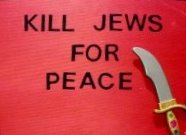The Glory of Sepharad
This post is dedicated le'ilui nishmato shel my sabba, Avraham (Alberto) ben Yaakov Shitreet z"l. May his memory be a for a blessing.
My sabba was a relic from a bygone time. He was born in turn-of the century Palestine, in Hebron, where his father was stationed as a Turkish soldier in WWI. His family was visiting from Jerusalem, in which they lived. My sabba told of how, as a baby, he was saddled onto a donkey for the trip from Hebron to Jerusalem. He was an exceptionnaly beautiful baby so his mother placed around his neck a hamsa medallion to ward off the evil eye. As the donkey swayed back and forth, the hamsa good luck charm almost strangled him, ironisally. His family lived in Yemin Moshe, the first neighbourhood to be built outside of the walls of the Old City, funded by Jewish philantropist Moses Montefiore. My sabba used to play as a little boy in the mulino, the windmill, built in the neibourhood.
He came from a lost world. His family had come to the Holy Land 500 years prior, at the time of the Expulsion from Spain in 1492. They still spoke the Ladino language, Judeo-Spanish. In his memory, I would like to share some the fascinating history and culture of Sephardic (Spanish) Jewry.
Jews had already begun to settle in Spain during the time of the king Solomon. The Golden Age of Spanish Jewry, however, was between the 8th and 11th centuries, when Spain was under Muslim rule. Jewish intellectual and spiritual life flourished and many Jews served in Spanish courts. Jewish economic expansion was unparalleled. In Toledo, Jews were involved in translating Arabic texts to the romance languages, as well as translating Greek and Hebrew texts into Arabic. Jews also contributed to botany, geography, medicine, mathematics, poetry and philosophy.
A number of well-known Jewish physicians practiced during this period, including Hasdai Ibn Shaprut (915-970), who was the doctor for the Caliph (leader of Spain). Many famous Jewish figures lived during the Golden Age and contributed to making this a flourishing period for Jewish thought. These included Samuel Ha-Nagid, Moses ibn Ezra, Solomon ibn Gabirol Judah Halevi and Moses Maimonides.
While Jews suffered from many discriminatory measures in Muslim al-Andalus, such as being forced to wear distinctive clothing or paying a special tax, they flourished. Islamic culture also influenced the Jews. Muslim and Jewish customs and practices became intertwined. For example, Arabic was used for prayers rather than Hebrew or Spanish. Before entering the synagogue, Jews washed their hands and feet, which is a practice done before entering a mosque. Arab melodies were used for Jewish songs. Jews wore the clothing style of their Moorish neighbors, although they were not allowed to wear silk or furs.
The Golden Age came to an abrupt end in 1147 when the fanatical Almohad dynasty came to power. The family of the great Moses Maimonides (the Rambam) fled to Morroco to escape the harshness of their reign. In 1098, the Christians conquered Toledo and Jews in Christian Spain prosepered while Muslim Spain was in decline. There was tremendous pressure on Jews to convert to Catholicism and many did, although some practiced Judaism in secret. These "New Christians" proved very irritating to the Church. Jews were forced into religious "Disputations" by the Church, although skilled rabbis often embarrassed Christianity by proving the validity of Judaism. Many riots broke out against the Jews and crypto-Jews ("maranos" or "anousim") were hunted, tortured, and murdered by the Inquisition. When the last Muslim stronghold of Granada fell to King Ferdinand and Queen Isabella in the 15th century, they felt that this was a divine sign that Spain should be united under Christianity. The Grand Inquisitor, Tomas de Torquemada, convinced the King and Queen that the expulsion of Spain's Jews was necessary. Two influential Jews, don Abarbanel and don Soneor, offered the King and Queen an enormous ransom of thirty thousand ducats to let the Jews stay. Upon hearing this, Torquemada, who was waiting outside the door, burst into the room holding a crucifix. He placed it on the table and said: "Judas sold his Master for thirty ducats. You would sell Him for thirty thousand ... Take Him and sell Him, but do not let it be said that I have had any share in this transaction." The Jews were given four months to convert to to Christianity or to leave Spain. On Tisha Be'Av of 1492, an estimated 100 000 Jews left Sepharad, their Spanish homeland. The Sephardim wandered all over Europe and North Africa. Many of them settled in Venice, Morocco and the Maghreb, the Ottoman Empire, Turkey and the Balkans, and in the Holy Land. Some also settled in the New World, hoping to escape the Inquisition, although anousim were persecuted in Mexico, Brasil and other Spanish conquests. The Sephardim lived according to their unique culture and way of life, speaking the Ladino language, dressing and eating in the way of medieval Spain, and practicing various religious customs. Most of the Sephardic communities of Europe were obliterated during the Holocaust, such as the communities of Bulgaria and Greece. Before the war, 55 000 Jews lived in Saloniki in Greece. They were such a large and influential part of the city that the port would close down on Shabbat. Over 54 000 Saloniki Jews were murdered in Auschwitz and Treblinka; only a handful survived the war.
The Sephardim wandered all over Europe and North Africa. Many of them settled in Venice, Morocco and the Maghreb, the Ottoman Empire, Turkey and the Balkans, and in the Holy Land. Some also settled in the New World, hoping to escape the Inquisition, although anousim were persecuted in Mexico, Brasil and other Spanish conquests. The Sephardim lived according to their unique culture and way of life, speaking the Ladino language, dressing and eating in the way of medieval Spain, and practicing various religious customs. Most of the Sephardic communities of Europe were obliterated during the Holocaust, such as the communities of Bulgaria and Greece. Before the war, 55 000 Jews lived in Saloniki in Greece. They were such a large and influential part of the city that the port would close down on Shabbat. Over 54 000 Saloniki Jews were murdered in Auschwitz and Treblinka; only a handful survived the war.
Sephardic Jews spoke the Ladino language, which was Judeo-Spanish. The Sephardi Jews preserved their special language, which was a combination of Hebrew and Spanish, known as Ladino. Ladino is still spoken by some Sephardic communities, such as those in Greece, Turkey, Bulgaria, Rumania, France and Latin America. Today the largest Ladino-speaking community can be found in Israel. One can also read Ladino in Sephardic literature.
When Jews left Spain and Portugal they continued to speak Ladino, in the same grammar and vocabulary of 14th and 15th century Spanish. The Sephardic exile communities of Amsterdam, London and Italy were still in contact with Spain and hence they continued to speak Castillian Spanish.
Exile communities in the Ottoman Empire, however, retained the 14th and 15th century Spanish and borrowed words from Hebrew, Arabic Greek, Turkish and French and diverged considerably from Castillian Spanish. There are many different Ladino dialects. An Oriental Ladino was used in Turkey and Rhodes, while a Western Ladino was spoken in Greece, Macedonia, Bosnia, Serbia and Rumania.
Today, there are about 200 000 people who still speak or understand the language in Israel, although the language is rapidly declining. My sabba used to sing Ladino songs. One of his favourites was Avre Tu Puerta Cerrada. It means 'Open Your Door for Me'. It was a love song of Spanish troubadours during the Golden Age and could still be heard sung by Sephardic women in the evening in early 20th century Jerusalem.
It is extremely beautiful. The lyrics are:
Avre tu puerta cerrada,
qu´en tu balcòn luz no hay
el amor a ti te vela,
partemos Rosa, partemos de aqui.
Yo demandi por la tu hermozura,
como te la dio el Dio
la hermozura tuya es pura,
la meresco solo yo.
Open your closed door,
because there is no light on your balcony.
Love may protect you,
let us go, Rosa, let us go away from here.
I have prayed for your beauty,
which is given to you from God.
Your beauty is pure,
it´s reserved for me.

























6 comments:
Beautiful song, and beautiful stories of your father.
Thanks for sharing, BK.
Beautiful! Ladino is easily understood if one speaks Spanish.
stunning overview and post my friend..what a legacy u have!
Thanks for sharing this with us. It was quite fascinating. I didn't know all this history before.
Beautiful tribute, and very informative.
One small thing: the third picture (interior of a synagogue) is from what I can tell the Tempio Maggiore, the Great Synagogue of Rome. I've been there, and the Roman Jews do not follow sephardic minhag but Italian, which is a denomination in itself, not linked to either ashkenazi or sephardic.
Aside from that, the post was terrific!
Post a Comment